Fast facts about the Sydney Harbour Bridge
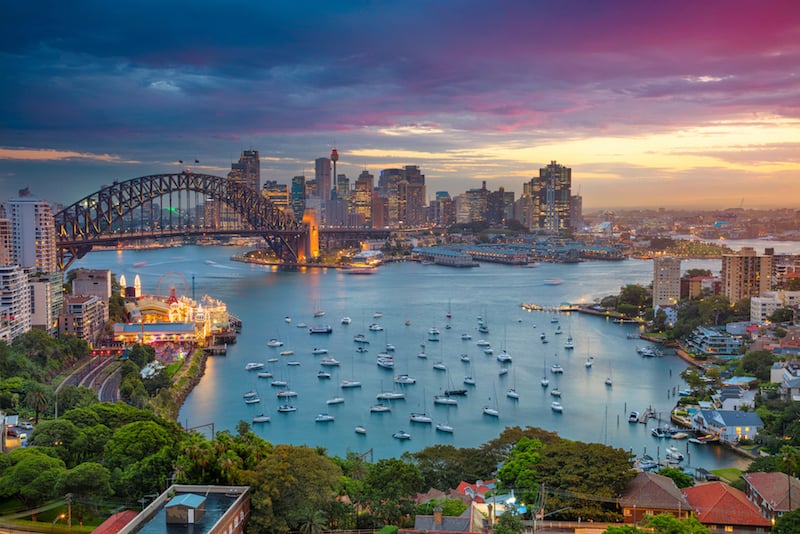
The Sydney Harbour Bridge is one of Australia’s biggest icons (next to the Sydney Opera House), I have complied a few “fast facts” on the bridge – Enjoy!
Plan your trip?
Avoid hidden fees in the exchange rate while withdrawing from millions of ATMs abroad, paying in restaurants and shops, and buying your accommodation and flights using the Wise Card. You can hold up to 40+ currencies at once to spend in in over 150 countries, and convert them in real time with the free Wise app.
Need help planning your trip from start to finish? Check out these helpful links:
- Cheap flights
- Savings on accommodation from hostels to luxury hotels
- Affordable car rental options
- Affordable sightseeing tours and day trips
- Travel Adapter – All in one so you don’t have to carry a bunch around
- Don’t be silly and forget Travel Insurance! Get hurt and you’ll regret it…
This post contains some affiliate links for your convenience. Click here to read my full disclosure policy. You can also read our content/editorial policy here.
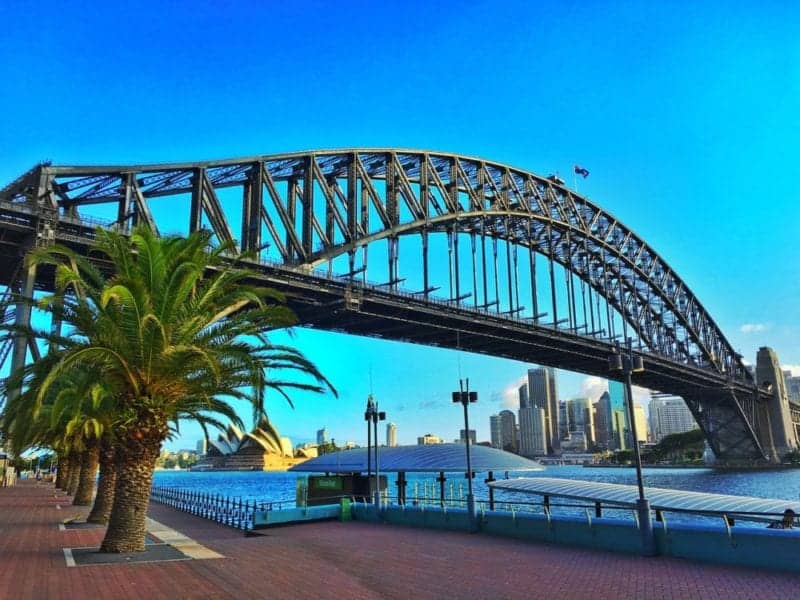
1. The Bridge is 134m high at the summit of the bridge and 1,149m long.
2. There are approx. 6 million rivets in the bridge. (I guessed a billion, I was a little off!)
3. On hot days the bridge can expand the height of the arch by as much as 18cm (7.1 inches) but the bridge has a specially designed hinges to allow for this change without compromising the Bridge.
4. The total weight of the bridge is 52,800 tonnes, with the arch itself weighing 39,000 tonnes. Approx. 79% of the steel used in the bridge was imported from England.
5. At each end of the arch stands a pair of 89 m (292 ft) high concrete pylons, faced with granite. The Pylon on each end are only for “decoration” they have no structural significance.
It took 250 Australian, Scottish and Irish stonemasons to prepare the granite for the Pylons and approx. 18,000 cubic meters of granite came from Moruya, NSW, 300km away from Sydney.
The stonemasons cut, dressed, and numbered each of the blocks and then transported them to Sydney on three ships built specifically for the transport of the granite to the bridge.
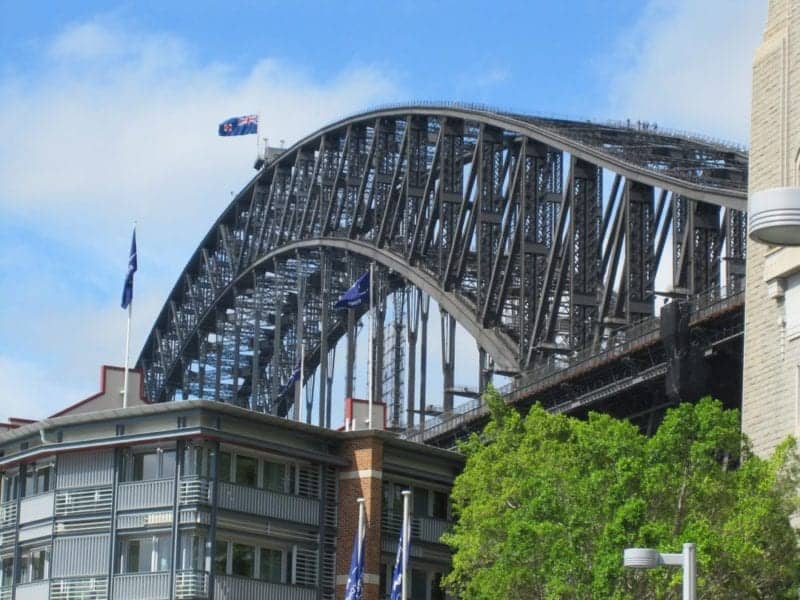
6. During the construction of the Sydney Harbour Bridge from 1923 – 1932 amazingly (and sadly) only 16 men died from bridge related work, of those 16, only 2 fell to their deaths from the bridge.
7. Vincent Kelly is the only known survivor of a fall from the bridge. Read more in BridgeClimb part 2.
8. During the construction of the bridge, 469 buildings on the north shore, both private homes and commercial properties were demolished in order to allow construction of the bridge, the occupants were offered little or no compensation.
9. In less than two years, on Tuesday the 19th August 1930, the two halves of the arch touched for the first time.
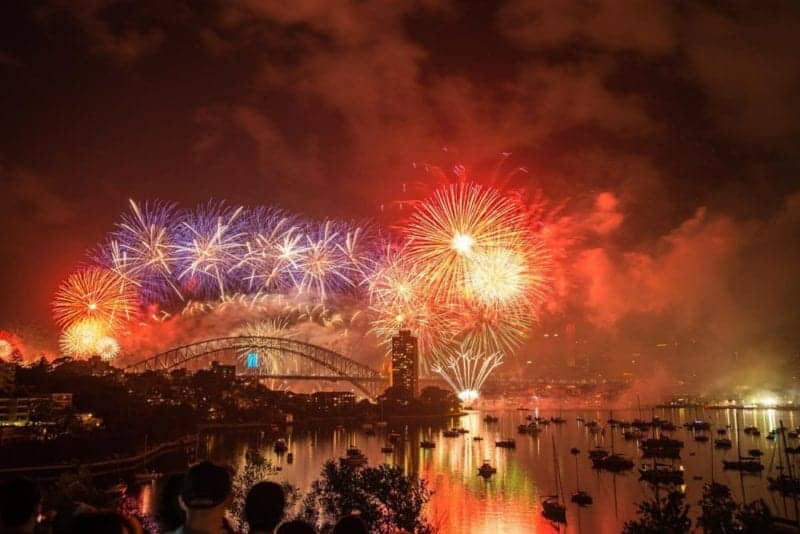
10. On 19 January 1932 the first test train which was a steam locomotive, safely crossed the bridge.
11. The Bridge cost AU£6.25 million to build, the debt was not paid off in full until 1988. Taking 65 years to pay off this enormous debt!
12. The Labour Premier at the time, Jack Lang was to open the bridge by cutting a ribbon at its southern end however Francis de Groot has other plans, he rode up on his horse and cut the ribbon with his sword. Francis was arrested and fined and later sued the Commissioner of Police for wrongful arrest and won!
13. The Sydney Harbour Bridge is also known as the “Coat Hanger” due to its shape.
14. In the 1950s and 1960s, the world famous White Cats lived in a ‘cattery’ on the roof of the Pylon Lookout. The cats belonged to Mrs Rentoul, who operated the Lookout at the time. People would come from all around to check out the amazing views and visit the cats.
15. “Crocodile” Dundee’s” Paul Hogan was once employed to work on the Bridge as a rigger.
16. The bridge is the centre of the New Year’s Eve celebrations, each year giving a bigger and better show!
17. If you are a scardey cat and don’t want to do the BridgeClimb (or if you can’t afford the BridgeClimb) the Pylon Lookout is the next best thing! You only need to take 200 stairs inside the south-east pylon to get to the Pylon Lookout for amazing views of the Sydney Opera House and Harbour surrounds. General admission is $13 per adult and $6.50 per child. (pricing as of Jan 2014)
18. In 1989 Paul Cave was involved in organizing a climb over the arch of Sydney Harbour Bridge and nine years later, BridgeClimb opened to the public!
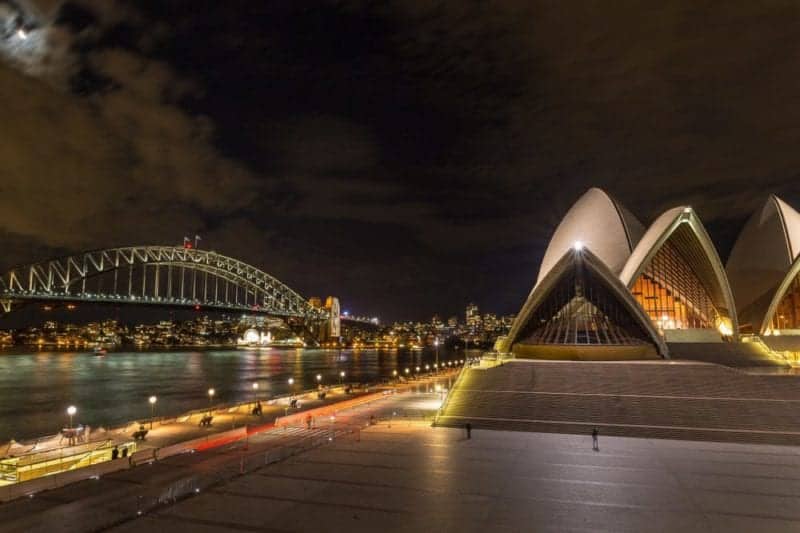
If you’d like to save it for later, please save it to Pinterest.
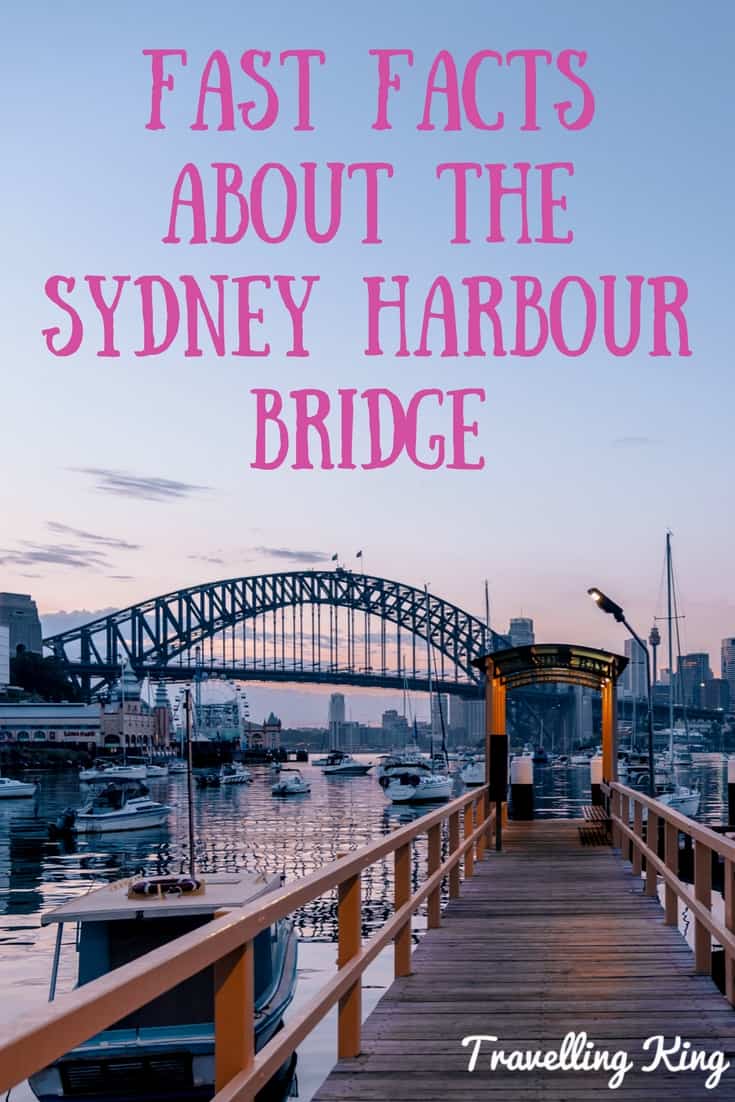
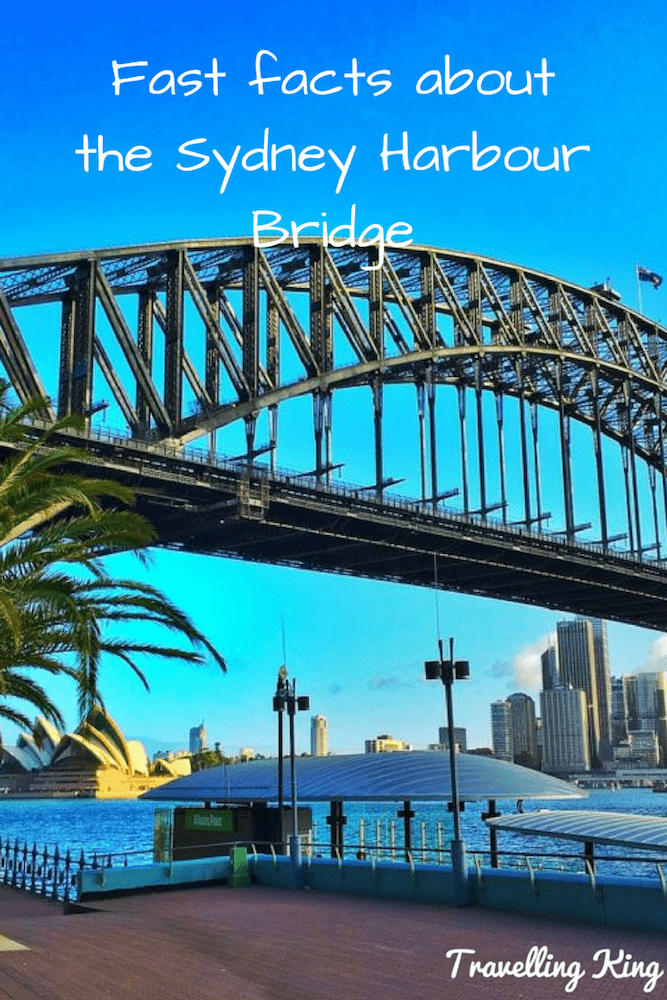




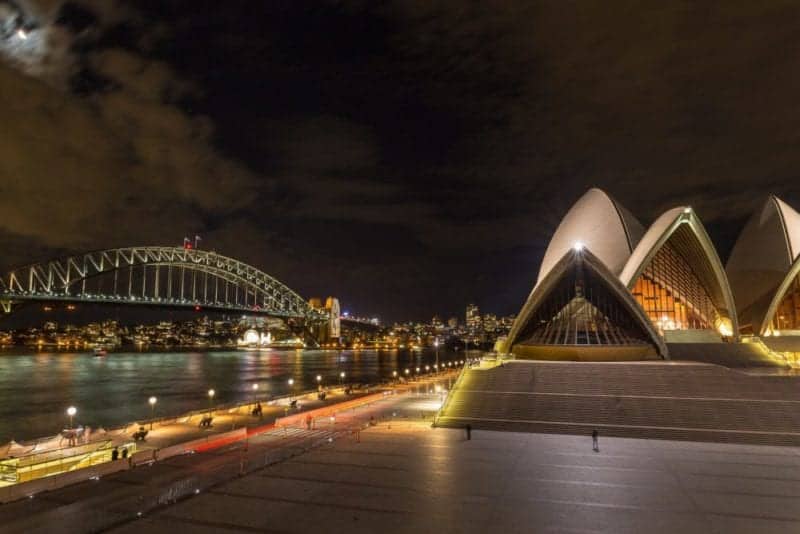

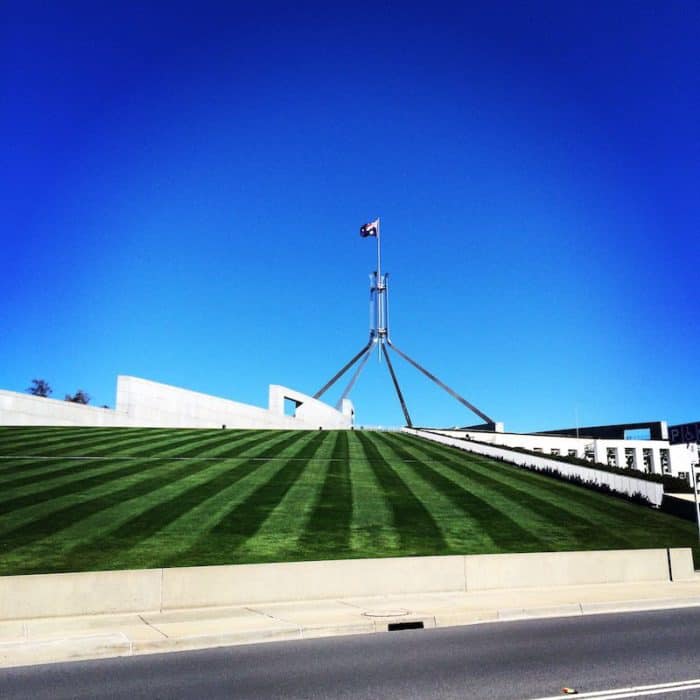
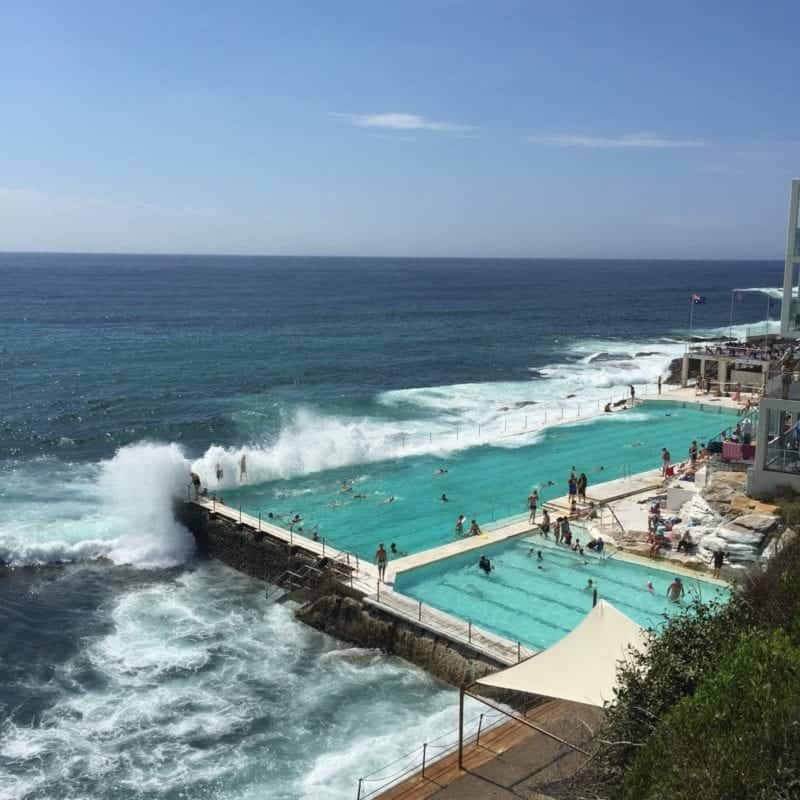

Hey!
Yeah I was pretty impressed!!
Would be interesting to know how they paid it off so quickly – would be a secret worth selling!! (maybe apply to home loans?)
The Harbour Bridge Climb is a great treat for travelers and locals alike. Would be so cool to be a Bridge Climb guide. Besides the daily rush of adrenalin and great views you get to present said facts in an interesting way. Its a traveler’s version of Stand up Comedy. You get to hone your act with each new audience. One day 😉
I know Loz – it’s the same thing I thought too! It would be an awesome job, best views most days!
Totally worth the climb!
We visited Sydney a couple of years ago in our round the world trip, and the Harbour Bridge was one of our favorite landmarks. Both the view from up there or the view of the skyline with the bridge standing on the riverside were absolutely amazing. I found reading all these interesting facts about the bridge very entertaining! Thanks for sharing them!
Thanks Gabor!
I LOVE Sydney!!! Have been over several times in the last year!
The “pylons at either end” arguably ARE structural. The bridge wouldn’t stay up without them.
The bridge’s seemingly rigid “arch” is actually a jointed three-pin portal, with hinges at the base of each pylon, and one in the centre of the span. It’s like someone straddling a creek, with each foot firmly planted on stable ground.
If the Pylons weren’t so massive, the outward thrust of the hinged “arch” would simply push them apart, and the Bridge would effectively “do the splits”.